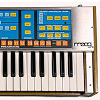mcatalao wrote:As a composer and arranger, i want to stress out the unhelpful arrangement topic, since it seems a bit underestimated.
My point is, a song with poor form, and no build up, small or none differences between intro, chorus and verses, lack of tonal context, and same range and tonal instruments fighting with each other and the Vocals (if there are), will make a song very hard to mix.
Most of the times i make arrangements for other musicians i try to mix my arrangement, in order to check if it builds up to a cohesive song, or to a big mess and even if im not going to mix the job, the final mix engineer receives a mixed version so that he "knows" where i'm aiming too in the arrangement. For example i'm quite picking with panning, and i've had some disagreements with mix engineers for messing with the instruments position. I'm ok with some changes (a 60% left to a hard left for example), but changing the whole pan of the tracks might be an arrangement option (think of an orchestra, you wouldn't make the instruments move in an orchestra, right? ).
Anyway, just for the record, i came across a couple of good posts in SOS, about arranging, and general form of Pop and contemporary music, and i think they are great:
http://www.soundonsound.com/sos/1997_ar ... ging1.html
http://www.soundonsound.com/sos/apr00/a ... ingpop.htm
+∞!!!normen wrote:
+1000, most problems in mixing are not with the mixing itself but with the arrangement. Especially hobbyist / beginner musicians often make the mistake that they prefer a certain type of instrument and frequency range and end up having lots of parts that cover each other in the mix. As you indicate, orchestral arrangement professionals already consider these things and it makes mixing the tracks SO much easier.
But btw, being an engineer (Tonmeister) I do move instruments in the orchestra or add/remove single instruments to sections, ofc in accordance with the conductorEspecially with Wagner that causes heated debates lots of the time though

Just like a loud mix starts with loud instruments/samples/patches and a loud arrangement, a good mix starts with good interments and a good arrangement.
More than any thing else, I consider myself an arranger. I've thought about instrument combinations and counter melodies and rhythms all my life. That's the primary reason I wish I had at least a laptop and garageband when I was back in High School in the 70s. At best I had a grand piano (for my last few years at home) and a reel to reel (borrowed).
Even more than getting a good "sound" or performance, I was interested in how parts worked together. On occasion I'd go to a friends house who also had a reel to reel and bounce back and forth to build arrangements - horrible sound, but it was the most magical and educational experience of my young musical adventure.
It all starts with a song (a Nashville saying), but is QUICKLY followed by an arrangement if it is to be successful IMO!!!










